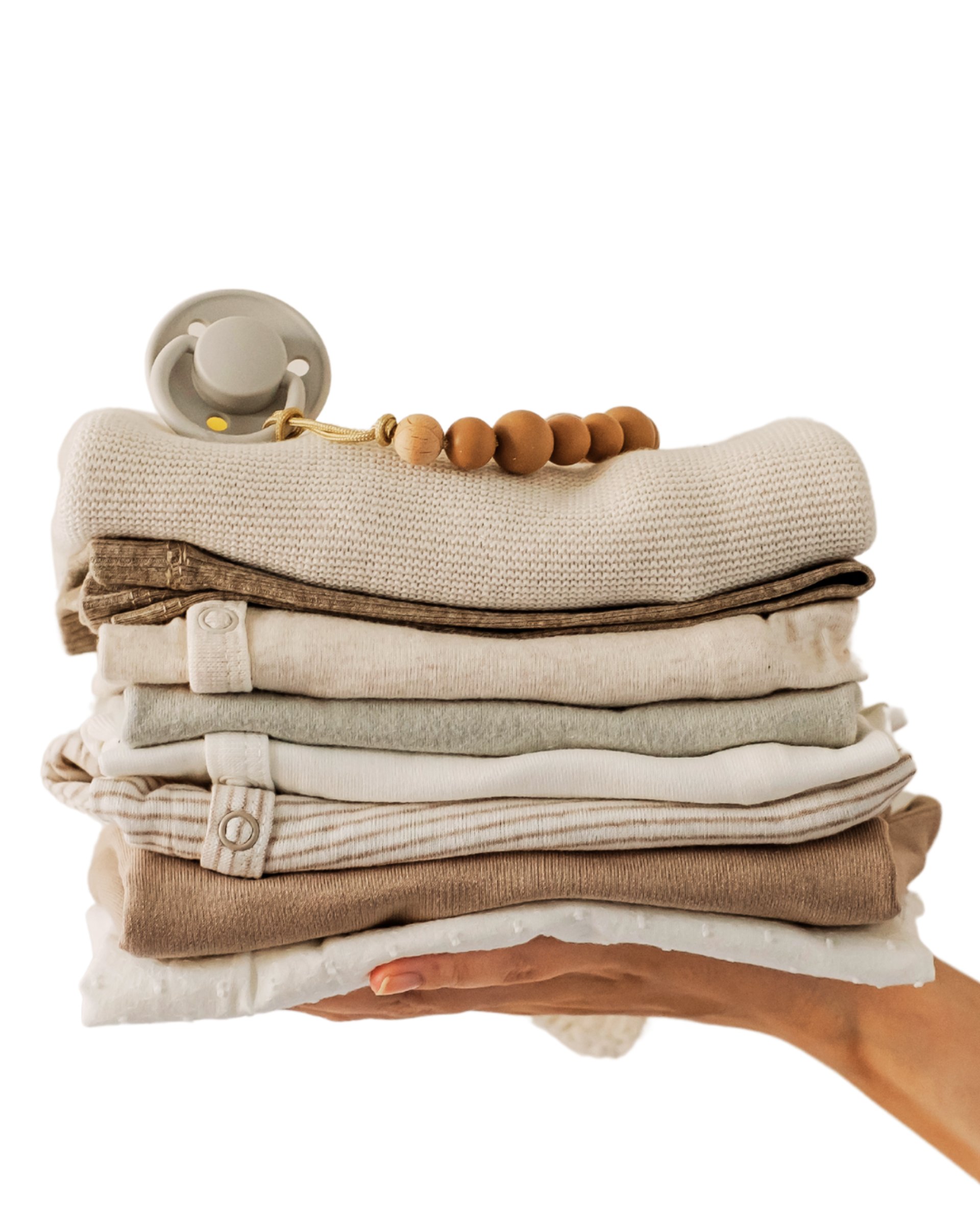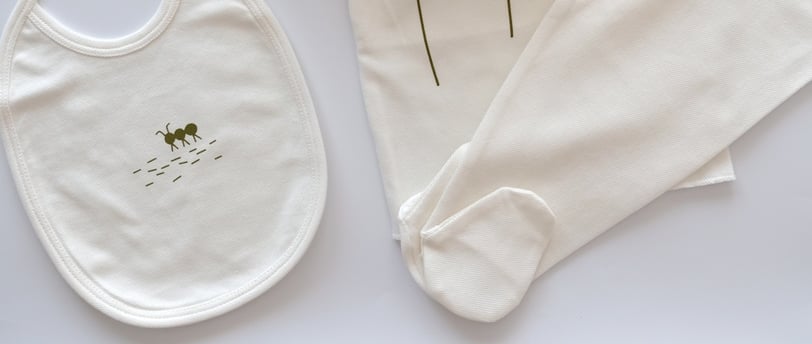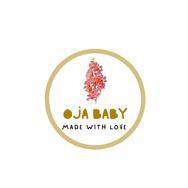
The Real Cost of Fast Fashion, and What it Means for Our Kids’ Future
Fast fashion makes everything feel easy. It means fresh onesies with every growth spurt, low prices, variety. But behind the bargain bin is a story we too often don’t see—a story that stretches from soil to sewing machine to far-off rivers, and sometimes, all the way into our own children’s skin
4/29/20253 min read


There’s something funny about baby clothes—how these tiny bodies fill them out for a blink, how we want them to have enough, to be warm and soft and safe, to wrap them up in all our hope and protection. And yet, in our rush to give them the world, it’s so easy to fill laundry baskets with more than we need, with pieces that, after a single season, tumble quietly to the back of a drawer, or worse, into a landfill.
I used to believe that because they’re so small, baby clothes couldn’t possibly do much harm. It took a long time, and a lot of late-night research, to learn otherwise: that our choices—even the gentle pajamas we buy at 3 a.m.—echo beyond our nursery walls.
Fast fashion makes everything feel easy. It means fresh onesies with every growth spurt, low prices, variety. But behind the bargain bin is a story we too often don’t see—a story that stretches from soil to sewing machine to far-off rivers, and sometimes, all the way into our own children’s skin.
What’s Really in Those Fibers?
Many mass-produced baby clothes are made with conventional cotton, which, according to research published in Environmental Health Perspectives (PMID: 15198915), is one of the world’s most pesticide-intensive crops. Residues from these chemicals don’t always vanish after a wash or two. Traces can linger in fibers, press against fresh new skin, spark reactions or, in some heartbreaking cases, contribute to eczema and allergies (PMID: 18627604).
It doesn’t stop with cotton. The dyes that give little leggings their cheerful color, the flame retardants sprayed onto pajamas, the microplastics woven into cheap knits—all of these ingredients can leach out, wear off, and find their way into a baby’s mouth, or into the water they splash in. These are not accusations—they’re gentle alarm bells, and they are backed by more and more studies every year. One review in the International Journal of Hygiene and Environmental Health highlighted how “various textile chemicals such as azo dyes, formaldehyde, and flame retardants have potential health effects, ranging from allergic reactions to more serious chronic problems” (PMID: 29970656).
More Than Skin Deep
But it’s not just about the health of our babies. I remember sitting up late, reading about Aral Sea cotton fields and dye-stained rivers in Bangladesh, about workers with hands roughened and lungs raw from what we call “progress.” I understood, painfully, how a single five-dollar onesie could leave behind a thousand invisible fingerprints, none of them gentle.
And where do these clothes go, when the fabric pills and the knees thin out? Most of them, according to the EPA, end up in landfills—where synthetic fibers can take hundreds of years to degrade, and where chemicals and microfibers seep steadily right back into the soil and water.
Towards a Better Inheritance
It can feel overwhelming, I know—like we’re grasping at straws, trying to do right by these tiny humans and the world that will eventually become theirs. I don’t believe in guilt, only awareness, and I think awareness is a kind of love.
Every time we choose organic, undyed, or simply buy less, we carve out a different future. We say, quietly but powerfully: your health and your planet matter more than convenience. We teach our children not just by what we say but by what we fold into their drawers and wrap around their bodies.
“Organic” is not a buzzword here; it’s a promise. A slower, kinder way. Something good to pass on—not just a piece of clothing, but a better story, pared down, full of care, to cloak them as they run toward the world we’re shaping for them.
—
References:
Gilden RC, Huffling K, Sattler B. Pesticides and health risks. Environ Health Perspect. 2010;118(6):A254–A259. PMID: 15198915
Thyssen JP, Linneberg A, Menné T, Johansen JD. The epidemiology of contact allergy in the general population—prevalence and main findings. Contact Dermatitis. 2007;57(5):287–299. PMID: 18627604
Marmugi A, Larras-Regard E, Guillain F, et al. Health impact related to textile and clothing chemicals exposure: A comprehensive review. Int J Hyg Environ Health. 2018;221(6):833-848. PMID: 29970656
